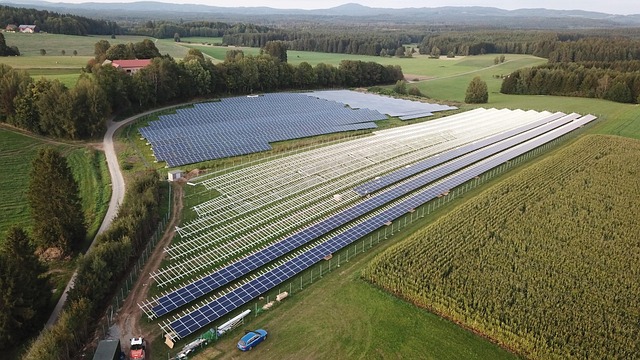The Cultural Impact of Solar Energy Adoption Worldwide
The transition to solar energy is not just an environmental or economic issue; it is also fundamentally a cultural one. The adoption of solar energy technologies is reshaping communities, altering social dynamics, and influencing cultural identities across the globe. This article seeks to explore the multifaceted cultural impacts that stem from the growing reliance on solar power in various regions around the world.
Understanding Solar Energy in Context
Solar energy harnesses the abundant power of the sun to generate electricity. As one of the most sustainable and clean energy sources available, it has reshaped the energy landscape in many countries. The implications of this transition extend beyond mere technological advancements; they permeate the fabric of societies, influencing lifestyles, economies, and cultural identities. History shows that energy sources have always played a significant role in shaping cultures. The Industrial Revolution, for instance, was marked by a transition to fossil fuels, which dramatically influenced societal structures. Solar energy adoption is proving to have similarly profound consequences.
Empowerment of Communities
One of the most significant cultural impacts of solar energy adoption is the empowerment of local communities, especially in rural and remote areas. Traditional energy systems often relied on central grids that left power-dependent communities feeling isolated and economically disadvantaged. However, solar technologies, particularly off-grid solar solutions, are providing previously marginalized communities with access to reliable energy.
This decentralization fosters a sense of autonomy. Communities can make their own energy decisions, which leads to local investments in solar infrastructure and the creation of green jobs. In countries like India and parts of Sub-Saharan Africa, for example, solar energy has become a catalyst for development. By shifting energy control to local stakeholders, communities have seen an increase in grassroots initiatives that promote education, health, and local entrepreneurship. This empowerment goes beyond economic implications; it instills a sense of pride and identity as communities reclaim their energy independence.
Changing Social Dynamics
The introduction of solar energy also alters social dynamics, particularly in areas where women have traditionally been disenfranchised. In many parts of the world, women bear the brunt of energy poverty. They often spend significant time collecting firewood or spending income on kerosene, which denies them opportunities for education and personal advancement.
Solar energy adoption can lighten this burden significantly. Access to solar-powered lighting allows children to study after sunset, while solar cookers reduce the time and labor women invest in food preparation. Such changes can elevate women’s roles in the household and community, enabling them to engage more actively in social and economic affairs. Furthermore, many solar initiatives emphasize female participation in technology installation and maintenance, challenging existing gender roles and fostering equity.
Cultural Identity and Green Narratives
As nations shift towards renewable energy, solar energy adoption is influencing cultural identities and narratives. Many communities now view solar energy not only as a means to combat climate change but also as an integral part of their cultural identity. Traditional cultures that have always revered nature see a parallel in the sustainable practices promoted by solar technology, allowing them to unite modern energy solutions with age-old values.
This cultural shift has led to a growing sense of pride in one’s environmental stewardship. For instance, in countries like Germany, initiatives promoting solar energy have become emblematic of national identity, tied to the narrative of being eco-conscious and forward-thinking. This transformation fosters a stronger connection between people and their environments, starting local movements that celebrate sustainability.
Educational Initiatives and Awareness
The rise of solar energy has coincided with emerging educational programs that aim to increase awareness about sustainability and responsible energy use. Several educational institutions now integrate renewable energy principles into curricula, encouraging students to think critically about energy consumption. Schools in regions with robust solar adoption often utilize solar panels as practical teaching tools, facilitating experiential learning that promotes environmental stewardship.
In this regard, solar energy becomes more than just an energy source; it serves as a symbol of innovation and future possibilities. Younger generations are becoming motivated to pursue careers in science, technology, engineering, and mathematics (STEM) fields to contribute to the ongoing energy transition, further connecting cultural narratives with potential technological advancements.
Economic Shifts and New Values
The economic implications of solar energy adoption also foster cultural shifts. As solar technology becomes more accessible and affordable, it leads to a re-evaluation of consumption patterns and values concerning energy. The focus on sustainability is gradually changing how societies define success, moving away from the outdated industrial growth metrics to a more sustainability-oriented approach.
This cultural shift is evident in evolving consumer behavior. Individuals are increasingly considering the environmental impact of their choices, leading to a rise in eco-friendly products and services. In markets where solar energy is prevalent, businesses are integrating solar usage into their brand narratives, which not only appeals to environmentally conscious consumers but also reinforces a corporate commitment to sustainability.
Globalization and Cross-Cultural Exchange
Global efforts to combat climate change have fostered conversations about solar energy across borders. International cooperation in solar technology development and deployment has resulted in cross-cultural exchange, as countries share best practices, resources, and innovations. This interconnectedness enhances cultural understanding and solidarity in addressing a universal issue.
For example, collaboration among nations in projects like the Solar Alliance—a coalition aimed at facilitating solar energy adoption—reflects a shift in cultural dialogues about energy. Countries are beginning to form bonds not solely based on traditional alliances, but rather on shared values regarding sustainability and the planet’s future. Such engagement cultivates a sense of global citizenship as people collectively work towards a sustainable and prosperous tomorrow.
Challenges and Resistance to Change
Despite the positive cultural impacts of solar energy adoption, challenges persist. Resistance to change is often rooted in cultural context, where established norms and practices face disruption. Some communities may distrust new technologies, viewing them as foreign or incompatible with traditional ways of life. This skepticism can stall solar initiatives, highlighting the need for culturally sensitive approaches to education and implementation.
Furthermore, economic inequalities can pose barriers to solar energy adoption, as upfront costs can still be prohibitive for many. In areas where access to capital is limited, solar energy becomes a symbol of disparity rather than empowerment, risking alienation rather than inclusiveness. Addressing these issues is paramount to ensuring that the cultural impacts of solar energy adoption are positive and broadly beneficial.
Conclusion
The cultural impact of solar energy adoption worldwide is profound and multifaceted. From empowering communities and altering social dynamics to fostering new values and identities, the transformation is palpable. As people increasingly embrace renewable energy technologies, it is essential to recognize the interplay between culture and energy; understanding each will only foster greater achievements in the quest for sustainability.
Future efforts must continue to intertwine technological innovation with cultural understanding, ensuring that the benefits of solar energy can be experienced widely and equitably. This journey not only contributes to achieving environmental goals but also enriches the cultural tapestry of societies globally, reminding us of the interconnectedness of humanity in striving for a sustainable future.



